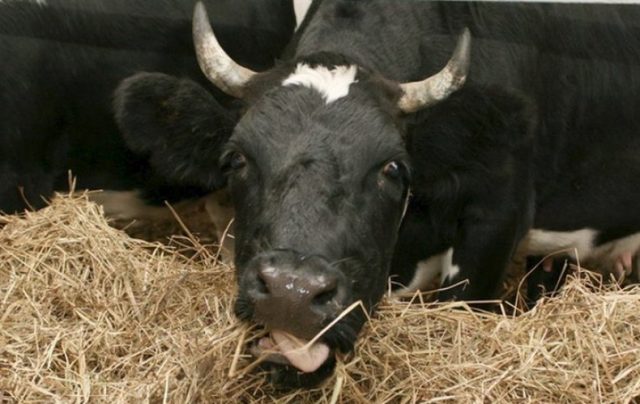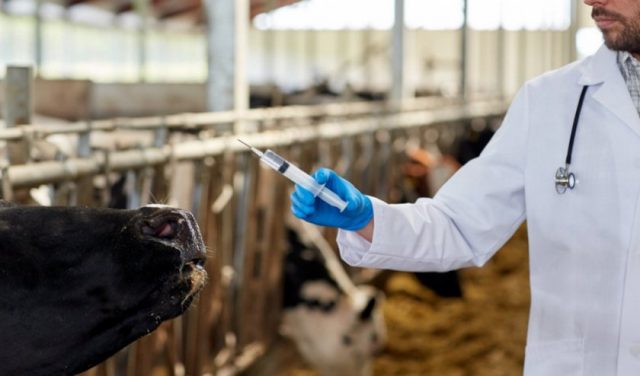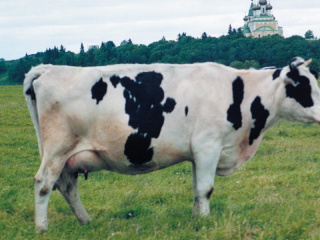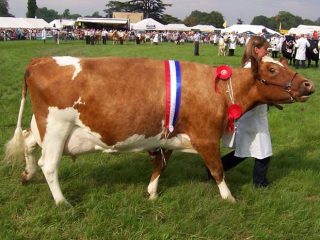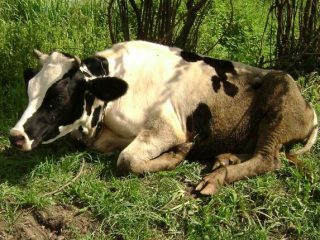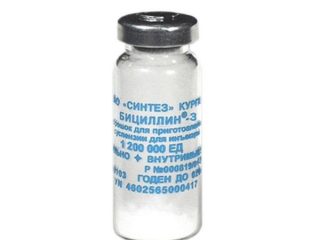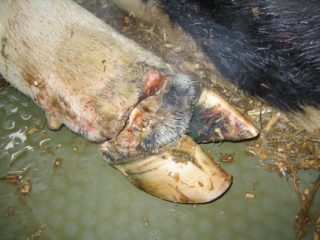Content
Cattle bluetongue is an infectious disease caused by a virus. This type of disease is popularly called blue tongue or punitive sheep fever. This is due to the fact that sheep are most often affected by bluetongue. This type of disease was first officially recorded in the South African region in 1876, and only in 1905 was the causative agent identified.
What is bluetongue
In veterinary medicine, bluetongue in cows is also called sheep punitive fever. This virus is a vector-borne infection that affects both domestic and wild ruminants. This infectious disease is characterized by a febrile state, inflammatory and necrotic lesions of the mucous membrane of the mouth and nose, and gastrointestinal tract; in addition, skeletal muscles in cattle are subject to deformation.
Causes
Bluetongue virus is found in the blood, plasma, serum and internal organs of sick cattle. As a rule, this type of pathogen can be transmitted from an infected animal to a healthy individual through blood-sucking insects.
The infectious disease bluetongue is a seasonal infection.It is important to consider that the disease coincides with the period when insects exhibit the highest level of activity. As practice and research show, the main carrier of the pathogen is woodlice, which is widespread.
In addition, mosquitoes and mosquitoes can spread this virus. Migratory birds are considered an intermediate link. This is due to the fact that transmission of the virus is first directed at insects, and they already transmit the infection to susceptible cattle.
Most often, outbreaks of the deadly disease are recorded in areas where there are a large number of swamps, quite a lot of precipitation falls, and there are areas where water stagnates. In addition, it is worth considering that this disease primarily affects those animals that have an inadequate diet, as well as if they suffer from worms and other infections.
Symptoms of bluetongue in cattle
If infection occurs naturally (from mother to fetus through the placenta), the incubation period in cattle can last up to 7 days. When infected from a vector, the incubation period can last from 2 to 18 days. After this period of time, the first signs of the disease begin to appear in cattle.
Bluetongue can occur differently in different individuals. It all depends on the amount of virus that has entered the body and the state of the immune system. There are the following forms of bluetongue disease:
- acute;
- subacute;
- chronic;
- abortive.
The acute form is the most indicative of the manifestation of signs of the disease.Initially, a slight increase in body temperature can be observed - up to 42°C, provided that in an adult animal a temperature ranging from 35.5°C to 40°C is considered normal.
Over the course of 24-48 hours, inflammation of the mucous membrane of the mouth and nose occurs. In this case, one can observe severe salivation and profuse nasal discharge in animals suffering from bluetongue, breathing is also difficult, and wheezing is present.
Gradually, the lips, tongue and area around the ears begin to swell. Hemorrhage appears in the oral cavity of cattle. All this leads to purulent inflammation and an unpleasant odor. The lips droop and a blue tongue protrudes from the mouth. Death occurs due to the general weakness of the animal and exhaustion of the body.
Subacute and chronic forms of bluetongue develop in a similar way, only the symptoms are much less pronounced. As practice shows, the abortive form of bluetongue in cattle occurs without symptoms, and in most cases self-healing occurs. After recovery, the animal remains a carrier of the virus for some time, and subsequently develops lasting immunity.
Diagnostics
After the infection has entered the body of cattle, the process of virus penetration into the blood cells located on the inner surface of the blood vessels begins. At the moment when the causative agent of bluetongue (cattle fever) enters the bloodstream, the process of destruction of the endothelium begins, as a result of which the animal develops edema and hemorrhage.It is important to understand that clinical symptoms do not appear for quite a long time, as a result of which the incubation period from the 1st month increases to 40 days. The process of tissue nutrition is disrupted, necrotic decay occurs.
Considering that this type of disease in cattle in most cases occurs in a subclinical form, it is not always possible to resort to the use of clinical methods for diagnosis. In order to detect bluetongue, one has to resort to the use of serological methods. PCR is used much less frequently, but it is necessary to understand that in this case the research results obtained will be as accurate as possible.
As practice shows, the most popular method is IF analysis, which can be used to accurately determine whether there are antibodies in the animal’s body. In addition, it is important that the presence of antibodies is not a sign that an animal has bluetongue. After an animal has recovered from the virus in the abortive stage, it acquires lifelong immunity from the virus, but the antibodies remain in the body for a long time. Thus, IF analysis is not recommended for use to detect the virus in areas where the disease is widespread.
Forecast of bluetongue in cows
With bluetongue in cattle, the following pathological changes are observed:
- the body is quite exhausted;
- due to poor circulation, swelling appears in the lower part of the animal’s body;
- the mucous membranes become inflamed, which later become blue;
- the tongue enlarges, falls out of the mouth, and becomes blue;
- ulcers and erosion can be seen on the gums and on the inside of the cheeks;
- a large number of foci appear on the muscular skeletal part in which tissue dies;
- the heart muscle increases quite significantly, after which it acquires a loose structure;
- significant changes in the structure of internal organs occur;
- Often, along with bluetongue, dropsy can be found in cattle;
- the skeleton and gastrointestinal tract are subject to deformation.
In the acute course of an infectious disease, you can observe a fever in the animal, which can last from 1 day to 1 week. If there is no fever during the disease, then the individual suffers the disease much more severely and subsequently dies.
Preventive actions
As a rule, infected animals are sent for slaughter and further disposal. If an individual is of particular value or is breeding, then it is preserved. To do this, the animal is placed in an isolated room and special conditions are created with improved feeding.
In such situations, they resort to symptomatic therapy, which is aimed at improving the general condition. It is prohibited to graze a sick animal. This is due to the fact that ultraviolet rays only worsen the general situation.
While fighting the disease, it is necessary to adhere to quarantine when importing animals to farms. As a rule, quarantine should last for one month. It is not recommended to import cattle from unfavorable regions.
If an infectious outbreak has been recorded, then it is worth stopping grazing in the evening.If there are swamps in the immediate vicinity, they must be dried and insects destroyed using insecticides. Animals need to be promptly vaccinated and promptly diagnosed for the presence of the virus.
Conclusion
Cattle bluetongue is characterized by a high mortality rate. If we consider stationary lesions, the mortality rate is about 10-30%. In new places, if an infectious disease is detected, livestock mortality can exceed 90%. It is for this reason that it is recommended to carry out preventive measures in a timely manner and fight the dangerous virus. The use of the vaccine allows you to protect the animal’s body for 12 months (vaccination is carried out annually). If an animal has an abortive form of bluetongue, lifelong immunity is developed.
